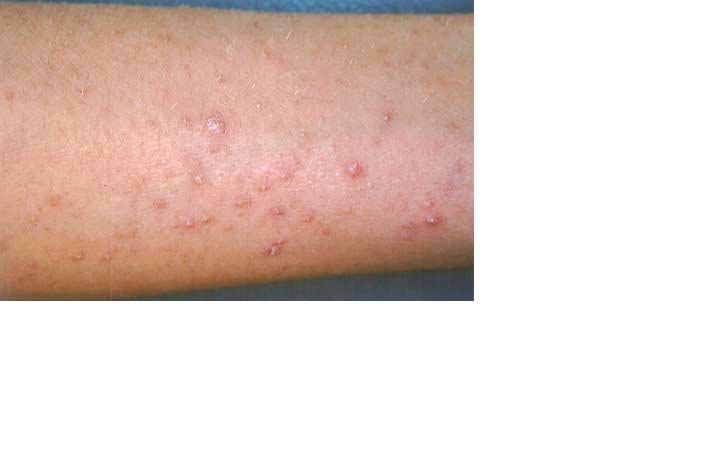
About a month ago, I experienced a very sudden and concerning skin issue—groups of painful, itchy bumps that rapidly spread over my arms, legs, and chest. Initially, I wasn’t too anxious. I scheduled an appointment with my primary care physician, hoping for answers. However, the examination was quick—she gave it a superficial look and guessed it was an allergic response. To her credit, she didn’t rush to conclusions. She took some photos and sent them to the dermatology department for clarification. In the meantime, I was prescribed antihistamines and instructed to wait.
Weeks went by. I followed up, I waited, and I saw my symptoms worsen. Still—no diagnosis, no direction. The uncertainty of not knowing what was going on with my body—why these outbreaks were spreading, why there was no improvement—soon felt just as hard to endure as the itching and burning itself. I felt trapped and adrift, waiting for responses that never materialized.
That’s when I understood firsthand how patients are frequently left uninformed when it comes to dermatology care. For many, particularly those in under-resourced communities, the primary care doctor isn’t just the first choice—it’s the only choice. This makes thorough dermatology training at that level a necessity, not a luxury.
My situation isn’t unique. In fact, it reflects a wider phenomenon. Skin problems are among the most common reasons individuals seek primary care providers. A two-year study discovered that nearly 60 percent of patients who presented with a skin issue identified it as their primary reason for seeking medical attention. Yet despite the frequency of these concerns, dermatology training remains insufficient. Another study revealed that 61 percent of primary care residents reported receiving less than two weeks of dermatology education in medical school—an alarming disparity that doesn’t align with the clinical reality they will encounter.
This discrepancy is particularly perilous when it overlaps with racial inequalities. A study in the Journal of Social Science and Medicine found that only 4.5 percent of images in medical textbooks depicted conditions on darker skin. This lack of representation leaves physicians unprepared to identify diseases in patients of color.
And even if a primary care physician does everything right—takes photographs, submits a referral, and adheres to protocol—access to specialists can be equally restricted. Dermatology clinics are typically overwhelmed, with long wait times and minimal timely follow-up on non-emergency referrals. In my instance, weeks went by in total silence. I was in diagnostic limbo—not due to neglect, but because the system isn’t designed to prioritize cases that don’t seem immediately urgent.
This problem is even more pronounced in rural and underserved areas, where dermatologists are already scarce and primary care physicians bear a greater burden with limited resources. In these settings, the necessity for confident dermatologic assessment at the point of initial care is even more crucial.
Skin symptoms aren’t always benign. They can indicate something deeper, significantly impact mental well-being, or—even in cases like melanoma—become fatal if overlooked. As a young patient, I know I don’t have all the answers. Far from it. But one thing I’ve come to understand is that silence—whether from the health care system or from those meant to provide help—never truly remains silent. It festers. It makes you feel invisible, as though your suffering doesn’t matter. For the doctors, I get it: They’re inundated. But in a country where a visit to a dermatologist can seem like a luxury, it’s clear that a specialists-only model isn’t realistic or fair. It’s a system that allows individuals like me—who simply need to be acknowledged and understood—to slip through the cracks.
Confronting this challenge necessitates a dual solution. Firstly, medical schools and residency programs must enhance dermatologic education for those entering primary care. A minimum of two to four weeks of concentrated dermatology exposure—especially with training across diverse skin types—should become a standard aspect of the curriculum. Secondly, health systems should refine dermatologic referral processes: Triaging cases more effectively, providing quicker teledermatology consultations, and establishing better communication loops between specialists and referring physicians.
This is not about assigning blame. It’s about constructing a system that genuinely prepares primary care providers to assist their patients—not merely sending them into the exam room without adequate tools or support. My doctor acted with care and diligence. She listened, she took her time. But I could sense her uncertainty—and that wasn’t her fault. She was doing her best in a system that hadn’t equipped her to address patients’ needs. When education doesn’t align with reality, everyone suffers. Providers feel overwhelmed, trapped, and unsure of how to assist. Patients feel dismissed or stuck. And it’s not for lack of effort—it’s because the system wasn’t designed to accommodate it.
We can improve. We can ensure that future physicians—especially those in primary care—have access to